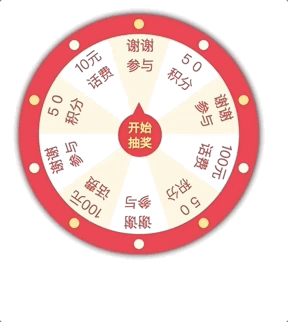本文译自【http://j4n.co/blog/Creating-your-own-css-grid-system】,英语好的,可直接查看原网页,不需要翻墙。
翻译拿不准的地方会有英文原文,方便大家理解。
一般的网格布局如下

可以看出主要有以下几个部分
- a container(容器)
- rows(行)
- columns(列)
- gutters (the space between columns)(列边距)
容器

容器的目的就是设置整个网格的宽度,通常设置为100%,但可能要给大屏显示器设置一个最大宽度。
.grid-container { width : 100%; max-width : 1200px; }
行

行是为了将列放在里面,并防止其溢出到其他行中。为了实现这个目的,我们采用清楚浮动的hack技术来确保所有的内容都在行中。
/*-- our cleafix hack -- */ .row:before,.row:after { content:""; display: table ; clear:both; }
列

毫无疑问,列是网格布局中最复杂的一部分。首先,在CSS当中,有好几种不同的列的定位方式,而且还要考虑不同的宽度,比如响应式设计。在这里我们将列设定位置,并给出宽度。下一部分再讲响应式设计。
列定位
浮动,行内块,块级表格(display-table),flex,有各种各样的方法。从我个人经验出发,最不容易出错和使用最广泛的就是float了。如果列是空的,将会漂浮在其他元素上面,为了防止这个,我们可以设定一个最小的宽度。
[class*='col-'] { float: left; min-height: 1px; }
列宽
为了确定一列的大小,我们可用容器的宽度来除以总的列数。在这里,容器的宽度是100%,假设是6列,那么一列就是100%/6=16.66%。
1px; width: 16.66%; }
当然,这只是开始,如果我们想要其他的宽度,可以这样设置:
.col-1{ width: 16.66%; } .col-2{ 33.33%; } .col-3{ 50%; } .col-4{ 66.664%; } .col-5{ 83.33%; } .col-6{ 100%; }
我们唯一要注意的就是,不管你最终多少列,各列加起来不能超过容器的宽度。
列边距

在'border-box' box-sizing模型出现之前,给一个百分比元素一个不可改变的宽度是一件很痛苦的事。幸运的是,用'border-box' box-sizing可以轻易的做到。
Before the 'border-box' box-sizing model,giving percentage-width elements a static padding was a real pain. Luckily,using the 'border-box' model,we can create gutters with ease.
-- setting border box on all elements inside the grid -- .grid-container *{ box-sizing: border-box; } [class*='col-'] { 16.66%; -- our gutter --*/ padding: 12px; }
(Personally,I use * {box-sizing: border-box;} in my CSS to apply border-box to everything on the page).
(这句不好翻译,主要是还不理解box-sizing)
基本网格布局如下:
<div class="grid-container outline"> ="row"> ="col-1"><p>col-1</></div> > ="col-2">col-2="col-3">col-3> >
CSS
.grid-container{ max-width: 1200px; } display: clear:both; } min-height:-- our gutter -- 12px; background-color: #FFDCDC; } .col-1{ width: 16.66%; } 33.33%; } 50%; } 66.66%; } 83.33%; } 100%; } .outline,.outline *{ outline: 1px solid #F6A1A1; } -- some extra column content styling -- [class*='col-'] > p { background-color: #FFC2C2; padding: 0; margin: text-align: center; color: white; }
HTML
> > > hr/>
制作网格布局
针对手机,调整我们的网格布局非常简单,只需要调整列的宽度就够了。为简单起见,在屏幕小于800px时,将宽度增大一倍。要注意的就是当.col-2 , .col-1,col-5在一行的时候,这时候我们将.col-2 , .col-1占满整行。
The only thing to watch out for is a few exceptions where the last column in the row hangs off the end. Such as in the case of the .col-2 columns and the.col-1 beside the .col-5 column.
To counter this,we'll make the last .col-2 and .col-1 in the row 100% wide.
@media all and (max-width:800px){ .col-1{ width: 33.33%; } .col-2{ 50%; } .col-3{ 83.33%; } .col-4{ 100%; } .col-5{ .col-6{ 100%; } .row .col-2:last-of-type{ width: 100%; } .row .col-5 ~ .col-1{ }
如果屏幕更小,我们继续调整。
@media all and (max-width:650px){ }
到这里,我们就创建害了我们的响应式布局:
="col-4">col-4="col-5">col-5="col-6">col-6>
要提醒的是这只是创建网格布局的开始,这还算不上是一个框架或完美的解决方法,但至少让我们觉得采用CSS创建网格布局的过程并不神秘。

 原文:https://www.cnblogs.com/wenruo/p/9732704.html 先上...
原文:https://www.cnblogs.com/wenruo/p/9732704.html 先上...